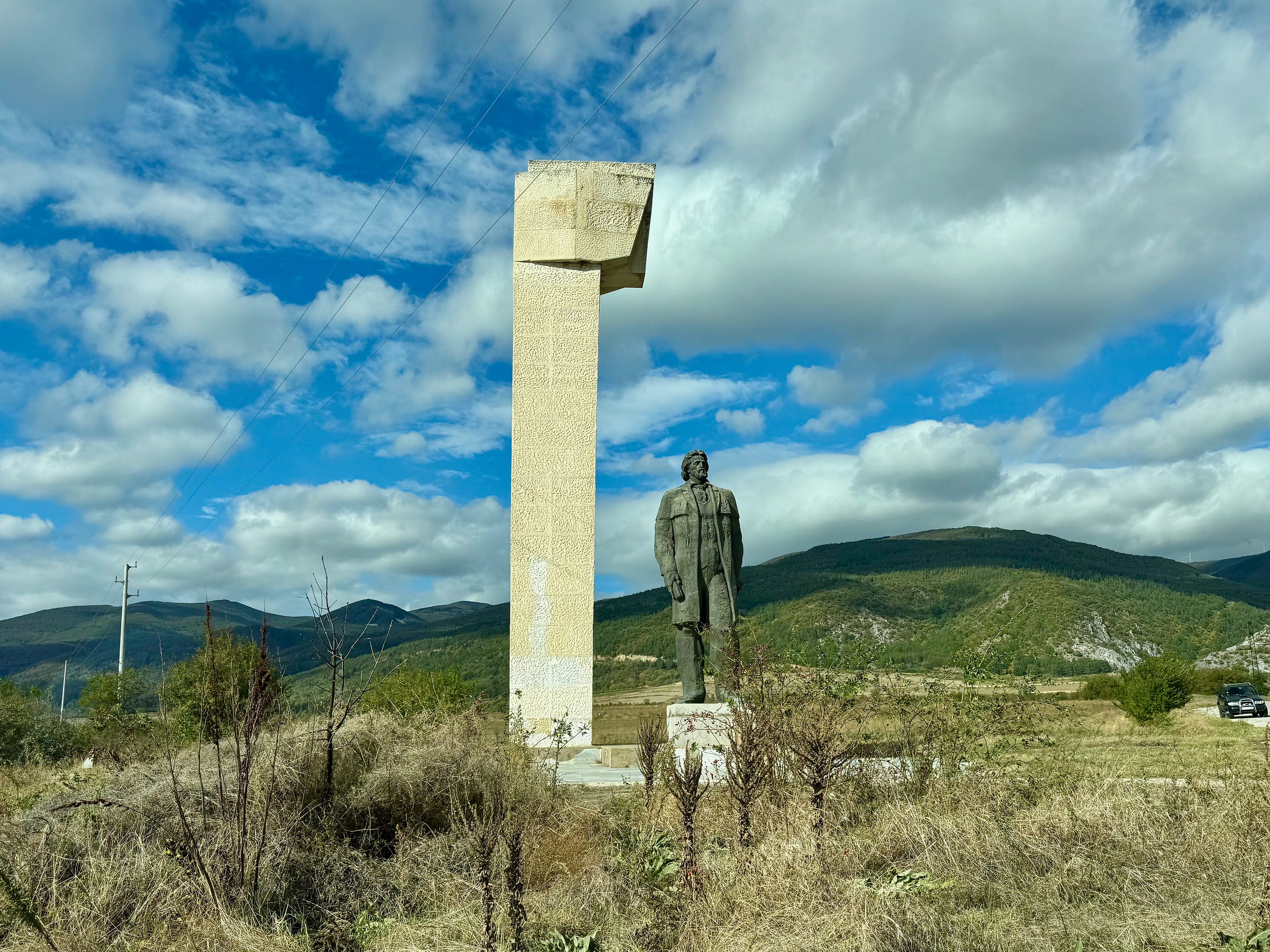Hi friends,
When I left you last Tuesday, Nick and I were just pulling away from Veliko Tarnovo and heading to Plovdiv, Bulgaria’s second city.
The drive to Plovdiv was punctuated by gray and hulking Communist monuments whose hardness contrasted with the soft beauty of Bulgaria’s countryside. The picture at the top is of Buzludzha, the most famous of Bulgaria’s monuments, but there are so many others. They would rise up out of nowhere, and for no apparent reason, from the open plains where there are few if any residents. There is no place in the country that the Communist party left untouched, nowhere you can go without a reminder of their ideology.
The blocky, drab aesthetics of Communism were, at least superficially, symbols of egalitarianism; they used cheap, easily accessible materials, a rejection of expensive bourgeois tastes. But I have a theory that they served another purpose: to break people’s spirits and make them easier to control. It’s difficult to have zest for life when looking out at a sea of cement slabs—they drain you of any joy or verve you once had, leaving you feeling apathetic and indifferent. And apathetic people are compliant people. Indifference isn’t conducive to challenging oppressive systems.
Fortunately, Plovdiv couldn’t have been more of a departure from that bleakness.






